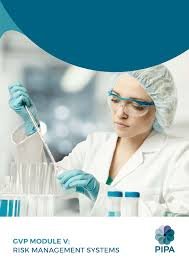Guidelines on good pharmacovigilance practices: Module V – Risk management systems

⚠️ GVP Module V – Risk Management Systems
🔹 Purpose
GVP Module V provides guidance on the establishment, implementation, and maintenance of Risk Management Systems (RMS) to ensure proactive identification, characterization, prevention, or minimization of risks related to medicinal products.
🔍 Key Concepts
✅ Risk Management System (RMS)
A set of pharmacovigilance activities and interventions designed to identify, characterize, prevent, or minimize risks related to medicinal products, and to evaluate the effectiveness of those interventions.
✅ Risk Management Plan (RMP)
A detailed document submitted by the Marketing Authorization Holder (MAH) that describes the RMS. Required at the time of:
-
Initial Marketing Authorization Application
-
Major variations
-
Post-authorization updates
📋 Structure of the RMP
1. Product Overview
-
Product information and usage.
-
Indications and populations targeted.
2. Safety Specification
-
Summary of known risks, potential risks, and missing information.
-
Data sources: clinical trials, post-marketing data, literature.
3. Pharmacovigilance Plan
-
Routine PV activities (e.g., ADR reporting, literature surveillance).
-
Additional PV activities (e.g., PASS – Post-Authorization Safety Studies).
4. Risk Minimization Measures (RMMs)
-
Routine: Labeling, SmPC, PIL, pack size.
-
Additional: Educational materials, controlled access programs, Direct Healthcare Professional Communication (DHPCs).
5. Evaluation of Effectiveness
-
How the effectiveness of risk minimization measures will be monitored.
-
Measured via surveys, audits, usage data.
6. Summary Tables
-
Clear tables outlining safety concerns, activities, timelines.
📌 Important Definitions
| Term | Description |
|---|---|
| Identified Risk | Proven association between the drug and an adverse reaction |
| Potential Risk | Suspected but not confirmed association |
| Missing Information | Lack of data on safety in certain populations or conditions |
| Risk Minimization | Actions taken to reduce the probability or impact of adverse reactions |
🔄 Lifecycle Management of the RMP
-
RMP must be updated:
-
When new risks are identified.
-
When existing risks change in severity/frequency.
-
When new effectiveness data on RMMs become available.
-
-
Updated RMP must be submitted as part of regulatory variations or renewals.
🧑⚕️ Roles & Responsibilities
-
MAH: Responsible for preparing, implementing, and maintaining RMPs.
-
QPPV: Must oversee implementation and ensure consistency with the Pharmacovigilance System Master File (PSMF).
-
Regulatory Authorities: Review and evaluate RMPs; may request updates or additional measures.
🔍 Integration with Other Modules
-
Closely linked with:
-
Module VI: Management and reporting of adverse reactions
-
Module IX: Signal management
-
Module VIII: Post-authorization safety studies
-
✅ Conclusion
GVP Module V ensures that risks associated with medicinal products are managed throughout the product lifecycle. The RMP is the central tool for structured risk assessment and control, aligning product use with benefit-risk balance and patient safety.
🎓 Discover one of the best Pharmaceutical Pharmacovigilance course available — click below to explore the course that’s shaping future Pharmacovigilance skills.

